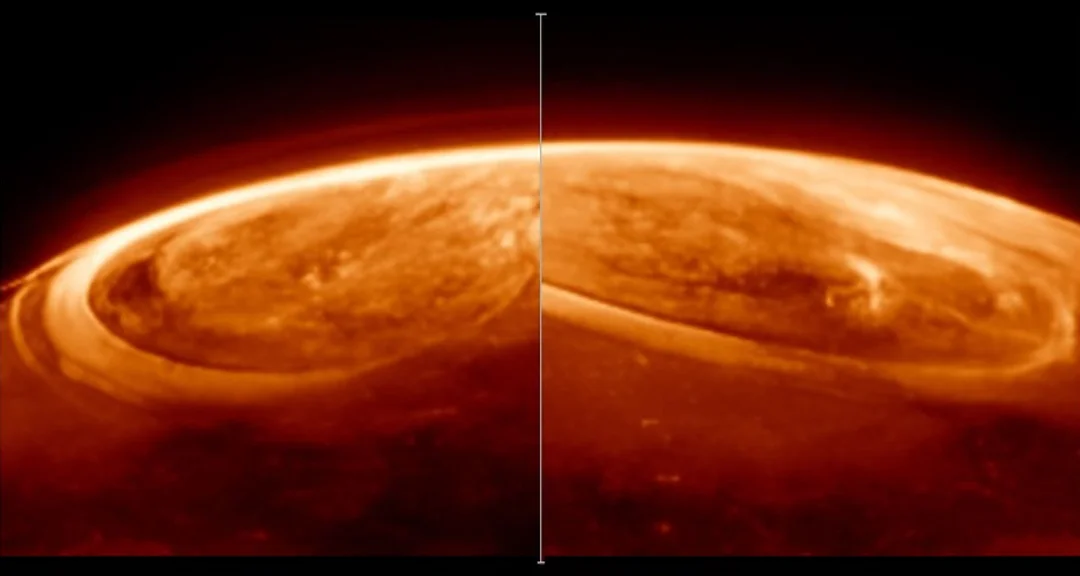
Jupiter’s Fiery Secrets Unveiled: Webb Telescope Captures Aurora Mysteries
The James Webb Space Telescope has once again delivered breathtaking images, this time revealing Jupiter's auroras in unprecedented detail. But beyond the stunning visuals, these observations have uncovered new mysteries about the gas giant's atmosphere and magnetic environment. Scientists are left "scratching their heads" after comparing Webb's findings with simultaneous observations from the Hubble Space Telescope.

Jupiter's aurorae are not just bigger, but significantly more energetic than Earth's northern and southern lights. These lights are magnetic phenomena caused by charged particles interacting with a planet’s magnetic poles. While Earth's aurorae are fueled by solar wind, Jupiter gets a boost from its moon Io, the most volcanically active object in our solar system. Io spews charged particles into space that Jupiter's magnetic field then captures.
The Webb telescope, using its Near-Infrared Camera (NIRCam), captured images of charged particles emitting trihydrogen cation, a molecule abundant in the universe. Jonathan Nichols from the University of Leicester, who led the team using both Webb and Hubble, described the initial reaction: "What a Christmas present it was—it just blew me away!"
The speed at which the auroras changed was surprising. "Instead, we observed the whole auroral region fizzing and popping with light, sometimes varying by the second," Nichols explained, contrasting this with their initial expectation of gradual fading.
However, the most intriguing discovery was the discrepancy between Webb and Hubble’s observations. "Bizarrely, the brightest light observed by Webb had no real counterpart in Hubble’s pictures," Nichols stated. This unexpected difference suggests a combination of high quantities of low-energy particles hitting Jupiter's atmosphere, something previously considered impossible. The cause remains a puzzle.

The team plans to further investigate these differences to understand the broader implications for Jupiter's atmosphere and space environment. More Webb observations are planned, which will be compared with data from NASA’s Juno spacecraft. This comparative approach could unlock the secrets behind the enigmatic bright emissions.
The James Webb Space Telescope continues to push the boundaries of our understanding of the universe, revealing stunning details while simultaneously presenting new, complex questions. Will the combined efforts of Webb and Juno finally unravel the mystery of Jupiter's aurorae? What other surprises does the largest planet in our solar system have in store?
Share your thoughts and predictions in the comments below! What do you think is causing this discrepancy between the Webb and Hubble data?